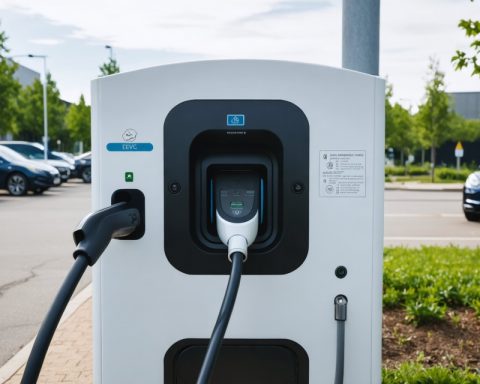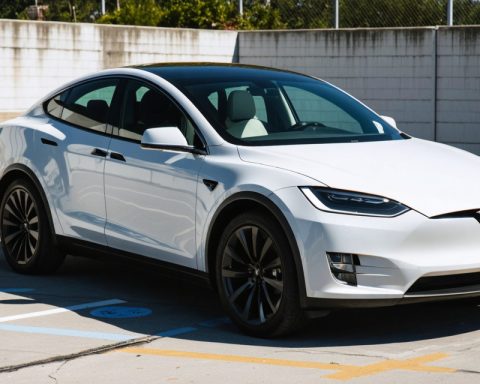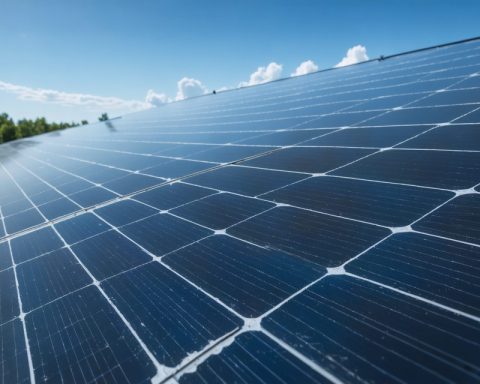- CarbonScape Limited has secured a U.S. patent for producing high-performance graphite from sustainable sources, revolutionising EV battery production.
- The process transforms biochar from sustainable forestry into high-quality graphite, reducing reliance on mining and promoting environmental sustainability.
- Strategically, this innovation reduces U.S. dependency on Chinese graphite, which currently dominates 95% of the global market, enhancing national security.
- CarbonScape’s technology achieves a 90% spheroidisation yield, significantly improving efficiency in creating battery-grade graphite.
- The company has formed partnerships to secure a continuous woodchip supply, stimulating economic and ecological benefits in the U.S. forestry sector.
- U.S. government initiatives, including those by the Department of Energy and the Department of Defense, support domestic graphite production, underlining its importance.
- This advancement contributes to a sustainable and secure U.S. EV battery supply chain, fostering energy independence and innovation.
Amid the swirling buzz of electrified dreams and the palpable urgency to transform transportation, an innovation emerges that promises to reshape the landscape of electric vehicle (EV) batteries. CarbonScape Limited, a pioneer in deep-tech solutions, has recently achieved a monumental breakthrough: a U.S. patent that solidifies its role in revolutionising the production of high-performance graphite from sustainable sources.
Picture a world where graphite, a crucial component in lithium-ion batteries, no longer hinges on the laborious draw of mining. Instead, imagine it born from the ashes—or rather, the biochar—of sustainable forestry. This is the vision CarbonScape has brought to life. By converting biochar, a carbon-rich byproduct of biomass, into high-quality graphite, the company has crafted not just a method, but a movement towards sustainability.
This innovation is not merely a technological feat; it is a strategic pivot for the United States, where EV battery demand swells, yet domestic graphite production barely peeps. China currently captures around 95% of the global market. CarbonScape’s technology offers a strategic detour—with implications stretching from environmental stewardship to bolstering national security.
In the dense forests of the Southeast, where woodchips whisper stories of growth, CarbonScape has secured alliances to unearth commercially viable volumes of woodchips, ensuring an unbroken supply line for its graphite production. These partnerships breathe new life into the U.S. forestry industry, promising economic revitalisation and ecological benefit alike.
The U.S. government isn’t just watching this shift unfold; it’s actively smoothing the path. Initiatives by both the Department of Energy and the Department of Defense champion domestic mineral procurement, while high import tariffs on Chinese graphite underscore the urgency of localised solutions. CarbonScape is poised perfectly at this intersection of opportunity and innovation.
CarbonScape’s patented technology doesn’t simply bolster supply—it redefines it. Achieving a staggering 90% spheroidisation yield, the company highlights an unparalleled efficiency in transforming raw feedstock into battery-grade graphite. With a cascading effect across the EV market, this development marks not just a milestone, but a turning point.
As the U.S. speeds towards an electric future, CarbonScape’s contribution ensures that this journey is sustainable, secure, and economically sound. By anchoring a domestic supply chain rooted in renewable resources, the company isn’t just manufacturing graphite; it’s manufacturing change.
In essence, CarbonScape paves a path towards energy independence infused with the spirit of innovation—a path that promises not just power for vehicles, but progress for the planet.
A New Era in EV Batteries: CarbonScape’s Sustainable Graphite Revolution
The Importance of Graphite in EV Batteries
Graphite is a key component in lithium-ion batteries, playing a critical role as the anode material. Its ability to handle the necessary electron and ion transfers makes it indispensable for battery performance. However, traditional methods of graphite production are heavily reliant on mining, primarily located in China, which controls approximately 95% of the global supply. This dependency poses significant risks to supply chains and encourages a push towards more sustainable, domestic alternatives.
CarbonScape’s Revolutionary Approach
CarbonScape Limited’s recent innovation in converting biochar from sustainable forestry into high-quality graphite marks a pivotal moment for the electric vehicle (EV) industry. This patented technology not only reduces dependency on traditional mining but also integrates sustainability into the battery production process.
– How It Works: CarbonScape’s process involves the transformation of biochar, a carbon-rich byproduct generated from biomass, into graphite that meets the exacting standards required for battery production. This method drastically reduces environmental impact compared to conventional mining practices.
– Sustainability and Environmental Impact: The use of biochar for graphite production is a more ecologically friendly alternative as it takes advantage of renewable resources. This approach aligns with increasing global demands for sustainable and eco-friendly technologies.
Real-World Use Cases
– Economic Implications: The strategic move towards domestic resources rejuvenates local forestry industries, providing new economic opportunities and job creation.
– National Security: By localising the graphite supply chain, the U.S. can mitigate the risks associated with geopolitical tensions over critical mineral supplies.
Pros and Cons Overview
Pros:
1. Sustainability: Offers a renewable source for graphite production.
2. Economic growth: Boosts local industries and reduces dependency on imported materials.
3. National security: Contributes to energy independence and mitigates geopolitical risks.
Cons:
1. Initial Investments: Developing and scaling such technologies may require significant capital investment and time.
Industry Trends and Predictions
1. Shift Towards Sustainability: As environmental policies tighten, the demand for sustainable materials in manufacturing is expected to rise, positioning CarbonScape as a frontrunner.
2. Increase in Domestic Production: Following CarbonScape’s lead, more companies may explore domestic production of essential battery materials, potentially reshaping supply chains globally.
How to Adopt CarbonScape’s Sustainable Solutions
1. Businesses: Companies involved in battery production can start exploring partnerships with CarbonScape to incorporate sustainable graphite into their supply chains.
2. Policymakers: Supporting innovations like CarbonScape through grants or tax incentives will further enhance the transition to sustainable industrial practices.
Conclusion and Actionable Tips
– Stay Informed: Keep abreast of developments in sustainable technologies and consider the long-term benefits of integrating such innovations.
– Invest Wisely: Look for opportunities to invest in companies that prioritise sustainability and hold patents like CarbonScape’s.
– Support Local Industries: Engage with or support policies that encourage the use of domestically sourced materials for manufacturing.
For more insights into sustainable technology and innovation, visit CarbonScape.
By leveraging CarbonScape’s technology, the U.S. not only takes a significant step towards energy independence but also sets a precedent for how sustainability can drive industrial growth and innovation.















